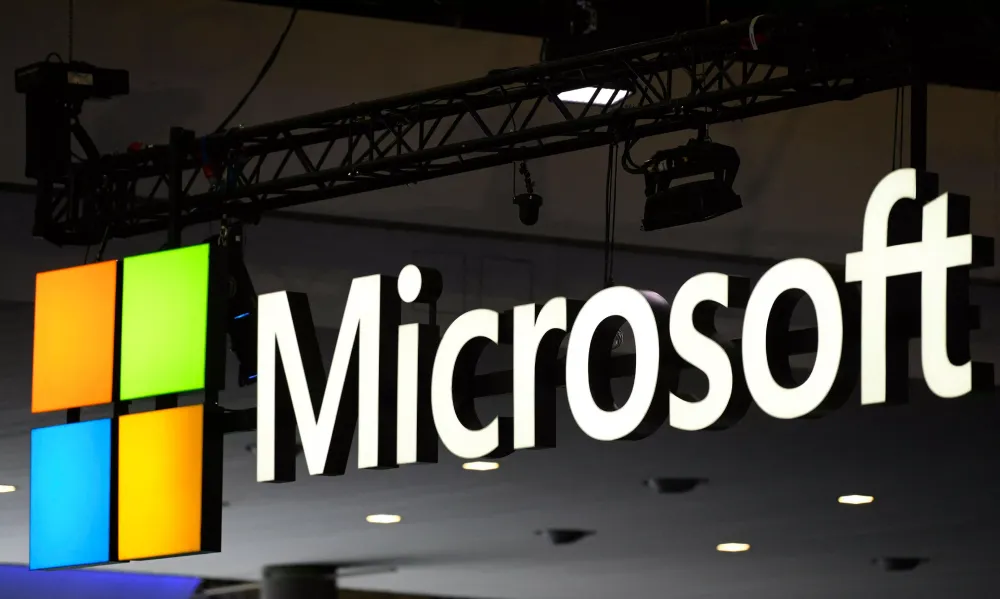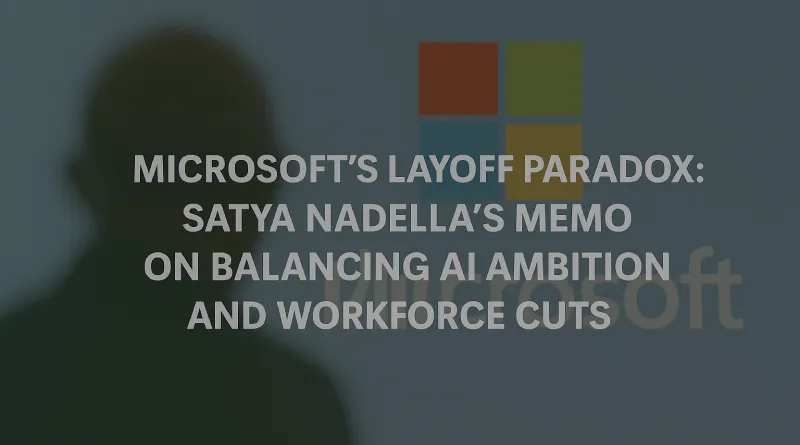Microsoft’s Layoff Paradox: Satya Nadella’s Memo on Balancing AI Ambition and Workforce Cuts
Introduction
In July 2025, Microsoft CEO Satya Nadella penned a candid memo to the company’s 228,000 employees, addressing the perplexing contrast between Microsoft’s soaring financial success and its decision to lay off over 15,000 workers this year. With a market valuation nearing $4 trillion and a stock price exceeding $500, Microsoft’s $75 billion net income over the past three fiscal quarters paints a picture of prosperity. Yet, the layoffs, including 9,000 in July alone, have sparked unease among employees and raised questions about the company’s direction. Nadella’s memo, titled an acknowledgment of the “enigma of success,” frames these cuts as part of a transformative shift toward an AI-driven future. This article explores the implications of Microsoft’s strategy, offering unique insights, local context, and perspectives grounded in credible sources.
The Enigma of Success: Profit vs. People
The memo by Nadella addresses what he depicts as the ambiguity and apparent lack of congruence of making profits and retrenching workers. He wrote that in every objective measure, Microsoft is performing positively, and that the market positioning, the strategy, and the growth of the company are all moving up and to the right. However, the 7 percent of the employees laid off represents the biggest cut of the company since 2014. The paradox is related to the fact that Microsoft invested 80 billion dollars in the AI infrastructure in order to build the company into a leader of the AI economy. According to Nadella, it is a reorientation of a “software factory” into an “intelligence engine” to give power to people worldwide to build their own solutions with the help of AI tools.
The layoffs are not restricted to Microsoft. Over 80,000 tech industry layoffs have already occurred in 2025, and such tech giants as Intel and Meta similarly downsized to invest in AI. According to Nadella, it is a very hard task that needs a process of unlearning and learning, as it is dynamic, dissonant, challenging tech change that continues to demand constantly. This echoes in the industry dynamics, where automation and AI are transforming job profiles, especially in sales, engineering, and management.
Local Impact: Seattle and Beyond
The layoffs have been painful in Seattle, where Microsoft is based. The main effect of this layoff was 1,985 job losses reported by the company to Washington state, mostly to software engineers and product managers. Such contraction spreads throughout the local economy, affecting such things as real estate and small businesses that depend on the spending of tech workers. The tech industry in Seattle, a climate of innovation, is in trouble as unemployed employees pursue a new path with the competition of getting a job. Nevertheless, the current situation of hiring, which is relatively stable in terms of the number of workers, helps Microsoft to receive some relief, as new jobs in the field of AI and cloud computing appear.
At the international level, the region impacted by the layoffs is varied, such as India, where Microsoft possibly relies on the presence of its R&D centers in Hyderabad and Bangalore to pursue its AI strategy. Although India is not facing explicit cuts in any rounds, the transition to AI-powered job positions is questionable with regard to reskilling. Microsoft has recently collaborated with Rosha Data Services India to develop AI in their winning system, Shakti Cloud, and this appears to have shown the commitment by their company to the region; however, it may put the local industries at stake due to the shift in the nature of current jobs without the development of the employees.

Unique Insights: Cultural Shifts and Employee Sentiment
According to Nadella, the process of layoffs has been a heavy burden, as seen in his memo. He also thanks the employees who have left the company, attributing their work to the foundation of Microsoft. The redundancies, however, have led to the fear of shifting workplace culture. In an opinion column on a blog posted in July 2025, former Microsoft engineer James McCaffrey wrote that the company has to be reclassified as having gone over to a shameful stage after being a compassionate one, a notion that some employees also expressed on sites such as LinkedIn. This implies a possible loss in the empathetic culture that Nadella had developed throughout the last 10 years in favor of a performance-based culture.
It is also possible to see in the layoffs a broader industry issue: the tension between human capital and technological ambition. The potential of giving every human on the planet access to applications of AI is inspiring, according to Nadella, as a coding agent or researcher, but the results can be disastrous, as the people that created the success of Microsoft in the first place feel marginalized. The lack of assurance of future layoffs in the memo further contributes towards the feeling of insecurity in the employees that might further create the culture of fear, which can kill innovation.
Microsoft’s Strategic Priorities
Nadella set three priorities, including security, quality, and AI transformation. Security and quality, he terms as non-negotiable considering that Microsoft is a critical global infrastructure. The prominence of the AI focus can be observed in such initiatives as the $4 billion of the so-called elevator program launched to train millions of people in the field of AI. The huge investments of 80 billion dollars in data centers and AI chips, as many times pointed out by Microsoft President Brad Smith, however, compel it to optimize its operating expenses by most often reducing its headcount. This is the rational fiscal policy, referring to the conflict between the short-term reduction and the long-term development.
The Bigger Picture: Industry and Ethical Questions
The downsizing in Microsoft indicates a changing face of the technological sector. Nadella has described the AI era in his memo as the PC revolution in the 90s, a period of upheaval that transformed economies. But the electricity consumption of AI systems and automation ethics are questionable. The growth mindset appealed to by Nadella encourages employees to change, but uncertainty in long-term work security might be discouraging. The competitive nature of the industry, where Microsoft has moved in, hiring 24 DeepMind engineers, also adds to this competition that may push traditional positions to the periphery.
Conclusion: Navigating a Transformative Era
The Nadella memo is an honest bid to match the financial success of Microsoft against the workforce dilemma. It proposes the layoffs as a painful but needed step in the messy transition toward an AI-driven future. In the case of the staff in Seattle as well as in India and other places, the question is how to make the adjustment to this change. There is some light at the end of the tunnel with Microsoft investing four billion toward progressing AI skills, but the cost of innovation is a tragic reality experienced by humans. As Nadella challenges his workforce to follow the mystical quest of success, technologic business looks observantly, since the trends Microsoft takes might predict the future of the whole industry.
Disclaimer
The information presented in this blog is derived from publicly available sources for general use, including any cited references. While we strive to mention credible sources whenever possible, Web Techneeq – Seo Company in Andheri does not guarantee the accuracy of the information provided in any way. This article is intended solely for general informational purposes. It should be understood that it does not constitute legal advice and does not aim to serve as such. If any individual(s) make decisions based on the information in this article without verifying the facts, we explicitly reject any liability that may arise as a result. We recommend that readers seek separate guidance regarding any specific information provided here.

